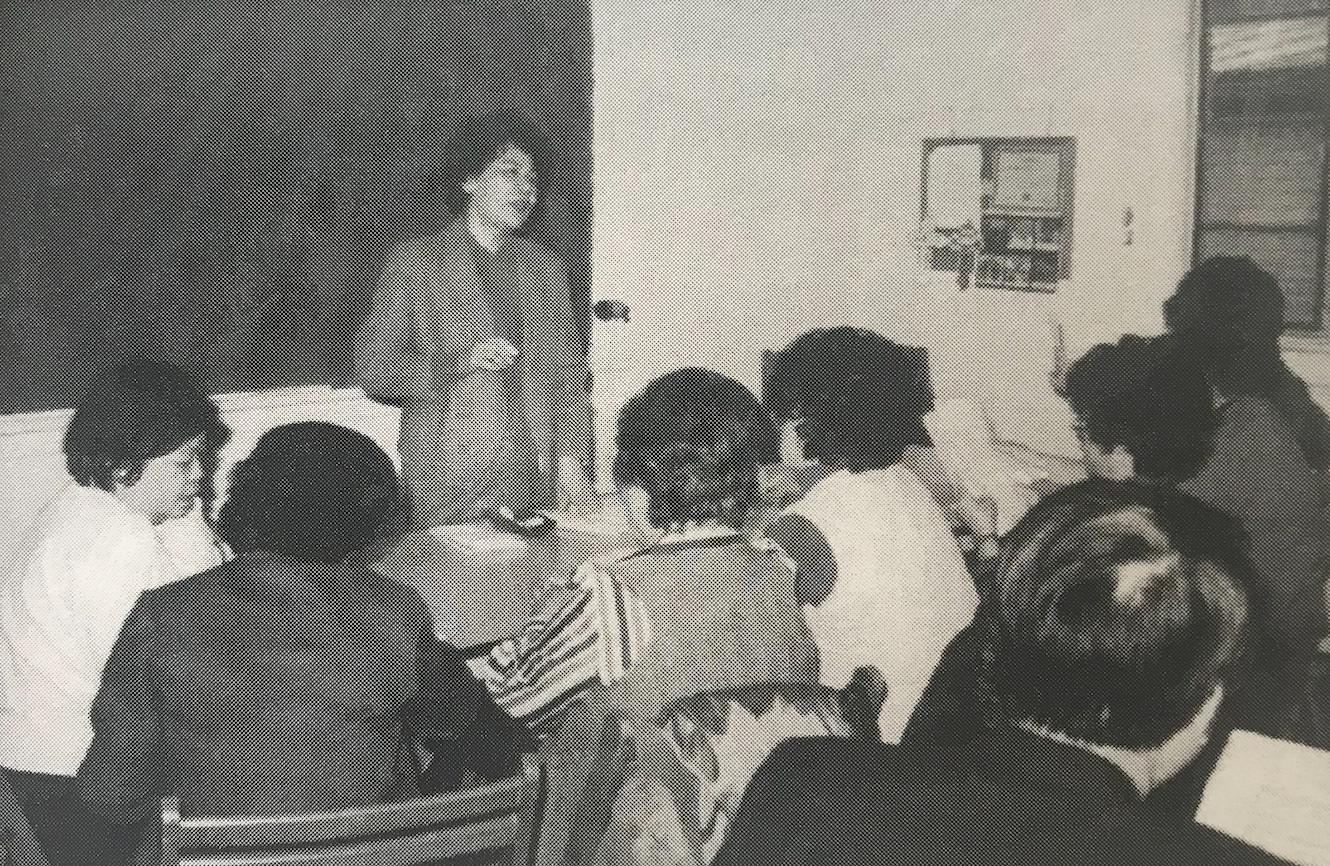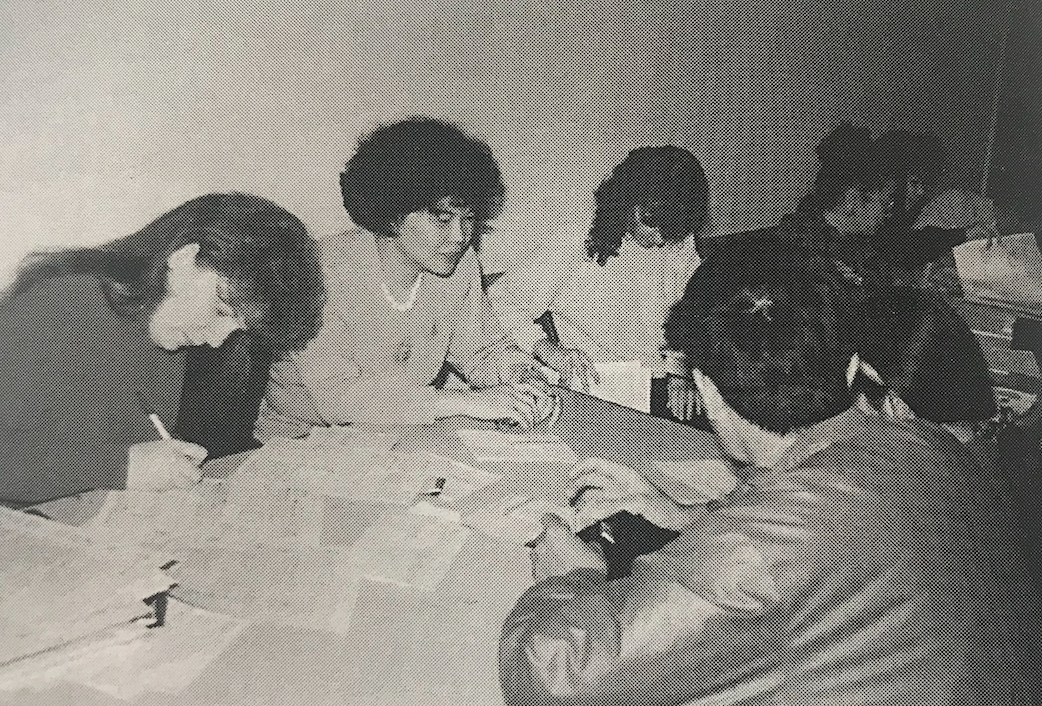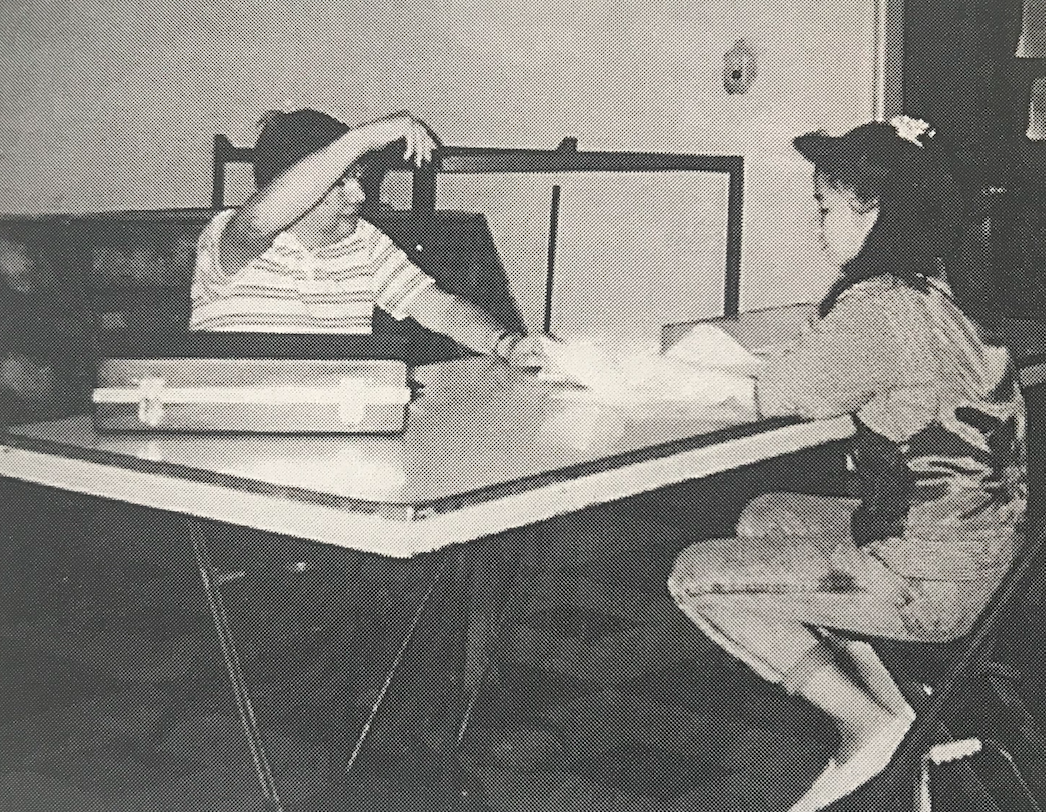The Chinatown Service Center: the Service Hub of the Chinese Community in DC
Looking southwest at the Chinese Community Church at the corner of 5th Street NW and Eye Street NW; Farragutful, CC BY-SA 3.0 <https://creativecommons.org/licenses/by-sa/3.0>, via Wikimedia Common
After the repeal of the Chinese Exclusion Act in 1943, and the passage of the War Brides Act in 1945, immigration from China to the United States greatly increased. With this change, Chinatowns transitioned from male-dominated spaces to communities with families. However, the newly arrived immigrants faced different social issues, including integrating into an American future and identity. In the 1950s, refugee provisions also increased migration as they facilitated family reunification and new families into Chinatown. Then, the immigration reforms in 1965 “dramatically accelerated the growth and transformation of the Chinese American community. The issues of family and youth housing, health services, and schooling had to be addressed.” [1]
In Washington, D.C., the Chinese Community Church was one of the sources of social service assistance for the recently arrived immigrants from China as they established programs for younger people, war brides, and other groups. [2] Within all of these periods, the Church and its community service programs dedicated their work to helping Chinese immigrants with housing, health services, schooling, job training, and other areas of need. [3]
What is the Chinatown Service Center?
In 1977, the Chinese Community Church, a non-denominational Christian church, founded the Chinatown Service Center (CSC) in order “to provide social and human services to the Asian immigrant community” in Washington, D.C. [4] The Church had previously been a source of service for the community yet this step in its journey was a monumental one. Many of the programs of the CSC are focused on providing assistance to “recently arrived Asian immigrants living in and around Chinatown.” This is part of what makes the CSC so distinctive to the Chinese community and to the history of Washington, D.C. more generally. Shirley Woo, a longtime member of the Church and the current director of CSC, described the importance of their work: “The Chinatown Service Center is more than a provider of essential services to the newly-arrived immigrants. Its presence shines as a beacon of hope providing assurance that they are not alone in their struggle to make the necessary adjustments to living in America.” [5]
The Chinese Consolidated Benevolent Association played an important role in the creation of the CSC as its building served as a base for early CSC activities. Since its inception, the CSC has moved locations a few times and is now housed in the current Church building on I Street, which has been the case since 2006. Its location in the heart of Chinatown is important in relation to its work for the Chinese community. The CSC does not have a religious affiliation yet it is supervised by the Community Services Committee of the Church as community service is integral to its mission.
Screenshot of the 1975 40th Anniversary CCC Yearbook
History of the CSC and its Significance to the Chinese Community
In 1975, Dr. Shau-Yan Leung proposed the idea for a service center for the Chinese community. Upon establishment, Theresa Lau served as the first part-time director of the CSC along with volunteers from the Church, including Gordon Tong and Joe Yuen. [6] From its beginnings in the mid to late 1970s, the CSC expanded its programs from assistance with taxes and immigration procedures, to tutoring, counseling, youth recreation, English classes and translation services, and refugee assistance programs. In 1979, the CSC, under the leadership of Gordon Tong and Theresa Lau, “began to focus much of their efforts on resettling and aiding refugees from Indochina.” [7] In order to do this, the CSC worked with the Catholic Conference to establish a “halfway house” where Chinese families could stay temporarily while they were resettling. [8] In order to fund all of these programs, the CSC received external grants from the Eugene and Agent E. Meyer Foundation and the Mott Foundation, private donations, and hosted benefit and fundraising events. [9]
One of the major projects that is still in progress at the CSC is the Thomson Project, a volunteer-run program for school-age children and teenagers who are learning English as a second language. The Church’s Community Service Committee, including John Lem, surveyed Chinatown residents in the early 1970s and one of the identifiable needs was for “better educational opportunities for the children.” [10] Named after the local Thomson Elementary School, the Thomson Project then officially began in 1972 with the help of Church members, tutors, and volunteers who were able to register students in the program and allow the project to grow. Rita Moy, a past director of the project, claimed that it “helps the Chinese children to become fluent in English, to expand their cultural interest, and to adjust well in the U.S.” [11] Not only did the Thomsen Project uphold the mission of the Church by providing social services for people in need, but it also “went beyond that seeking to build skills and knowledge for youth to have an American future, which included capabilities for them to see and seize opportunities for higher education and careers outside of Chinatown. While this work was helping to fulfill dreams to continuously improve each generation, it was also sowing the seeds for residents to detach themselves from Chinatown and move to the suburbs and beyond.” [12]
As the CSC received more funding, their services opened to target different ways of assisting the Asian community in DC. According to the CSC website, this includes “public service assistance in health care, housing, food stamp, utility discount, legal resources, school, [and] employment.” [13] A few of the long-lasting programs of the CSC are the citizenship and English language classes, which work together to provide “instructions on the naturalization process” for immigrants arriving in the country. [14]
Screenshot of the 1995 40th Anniversary CCC Yearbook: Mandarin Class, Tax Time, & Thomson Project
The CSC Now
As Chinatown has changed in the past several decades, the CSC has played a fundamental role in the Chinese community. Its service programs have expanded during this time and have thus accommodated the needs of the community in many ways. The CSC has also been a key supporter of the 1882 Foundation and their Talk Story Events, which are routinely held at the CSC. [15] Current director of the CSC Shirley Woo remarked that the “CSC has helped many become U.S. citizens, enroll children in school and see them graduate and go on to higher education, obtain [a] driver's license, find housing and employment, help [...] them to access the necessary social services to improve their daily living and become good, productive citizens. A kind and encouraging word from a person who understands and cares aids immeasurably to the well-being of the individual. In one sense, our just being there for them is more important than the sum of services we provide at the Center.” [16]
Ultimately, in its work over the past four decades, the CSC has dedicated its programs to the individuals and families of the Chinese community in Washington, D.C. The Church is the only Chinese Church in the city and the CSC works along with the Church’s Community Services Committee to assist their community. In recent years, the CSC has even come to serve not just people in the District from China, but also “people from other parts of the world such as Latin America, Japan, Korea, Turkey, Poland, and Africa.” [17] As the CSC adapted its services for the Chinese community in D.C. throughout its history, it also broadened its work to benefit other populations in need of similar assistance. Thus, the CSC holds a distinctive and meaningful place in the heart of the Chinese community in the city, but also in the broader D.C. community and in the city’s history.
Sources
[1] Historical context provided by Ted Gong, Executive Director of the 1882 Foundation, April 25, 2021.
[2] S. Y. Leung, “The Story of the Chinese Community Church 1935-1985. Growth During the War Years”, Chinese Community Church, 50th Anniversary Yearbook, 108; Evelyn Chen and Elsie Yuen, “Women’s Club-In Retrospect & Prospect” Chinese Community Church, 40th Anniversary Yearbook, 37.
[3] Leo, “History of the Chinese Community Church of Washington, D.C.”
[4] “People,” Chinatown Service Center, Accessed April 27, 2021, https://www.chinatownscdc.org/people/.
[5] Shirley, Woo, email to Claudia Vinci, April 14, 2021.
[6] James Leong, “Community Services,” Chinese Community Church, 1980 45th Anniversary Yearbook, 43.
[7] Ibid., 43.
[8] Ibid., 43.
[9] Ibid., 43.
[10] Rita Moy, “A Christian Response,” Chinese Community Church, 1985 50th Anniversary Yearbook, 15.
[11] Ibid., 16.
[12] Quote from Ted Gong, Executive Director of the 1882 Foundation, April 25, 2021.
[13] “Programs,” Chinatown Service Center, Accessed April 27, 2021, https://www.chinatownscdc.org/programs/.
[14] Ibid.
[15] “Background: From Project to Foundation,” 1882 Foundation, Accessed April 27, 2021, https://1882foundation.org/about-2/.
[16] Shirley, Woo, email to Claudia Vinci, April 14, 2021.
[17] “Programs,” Chinatown Service Center, https://www.chinatownscdc.org/programs/.




